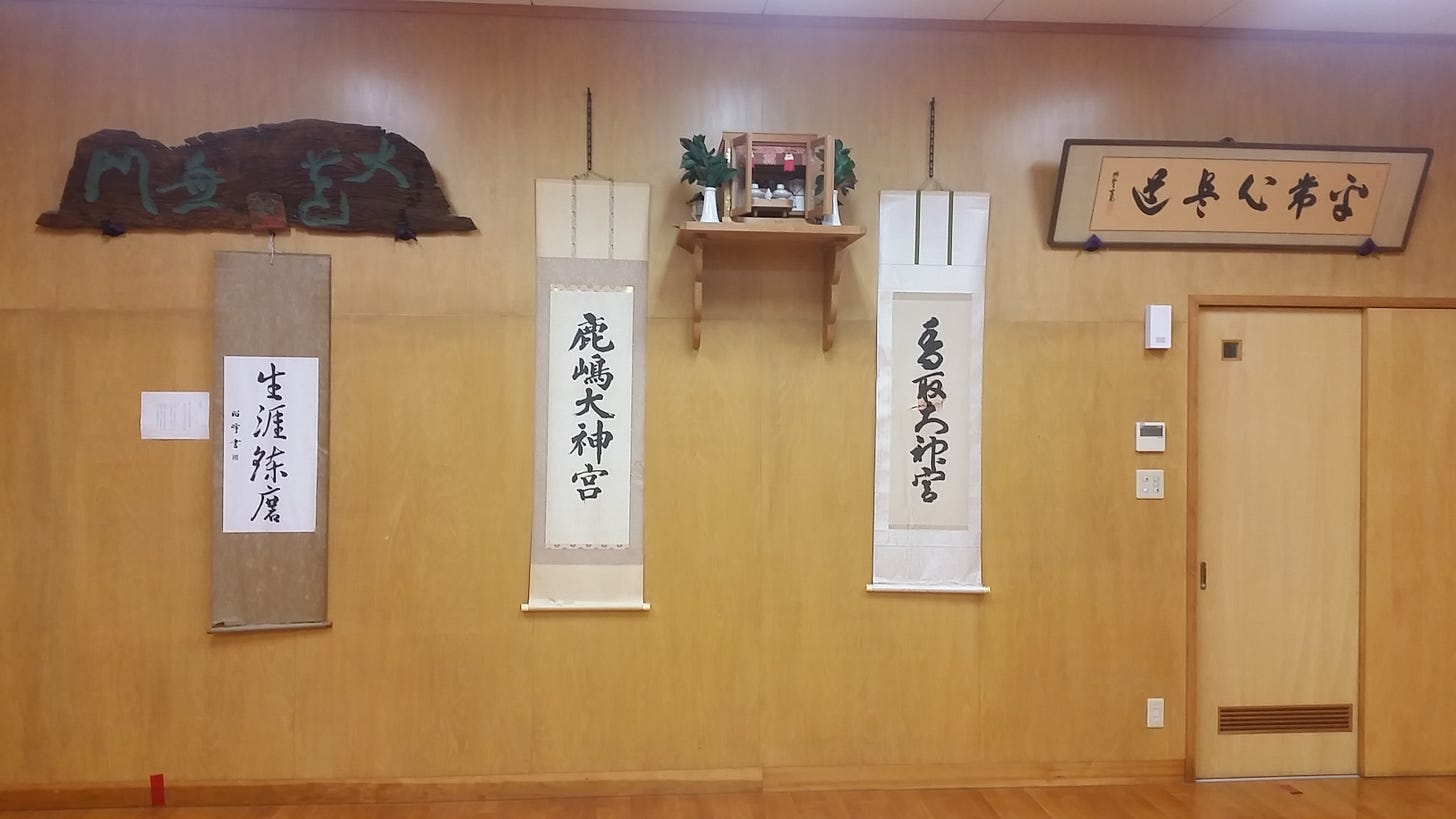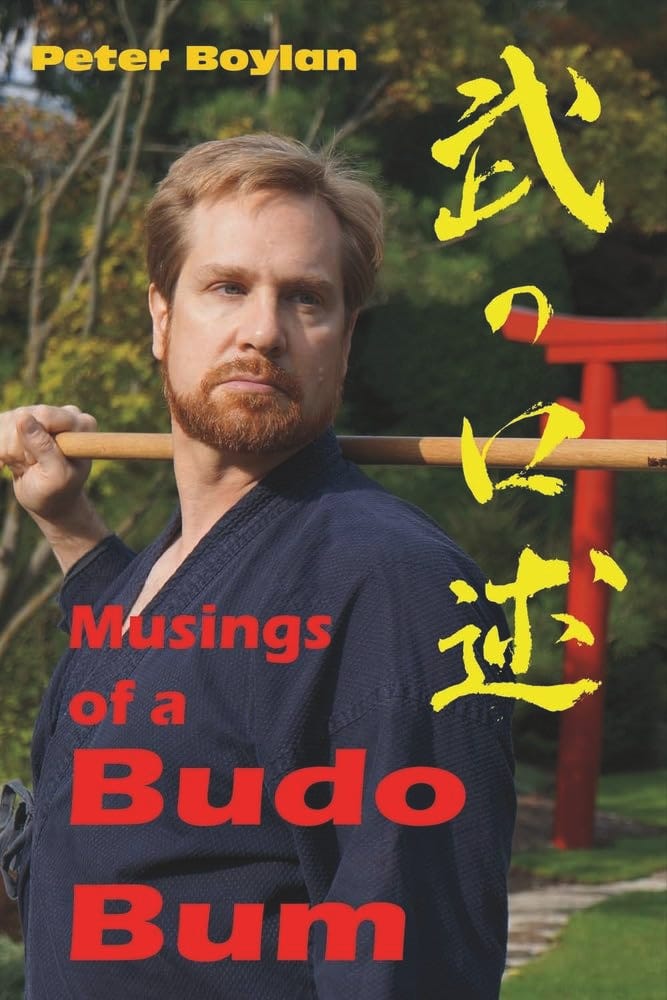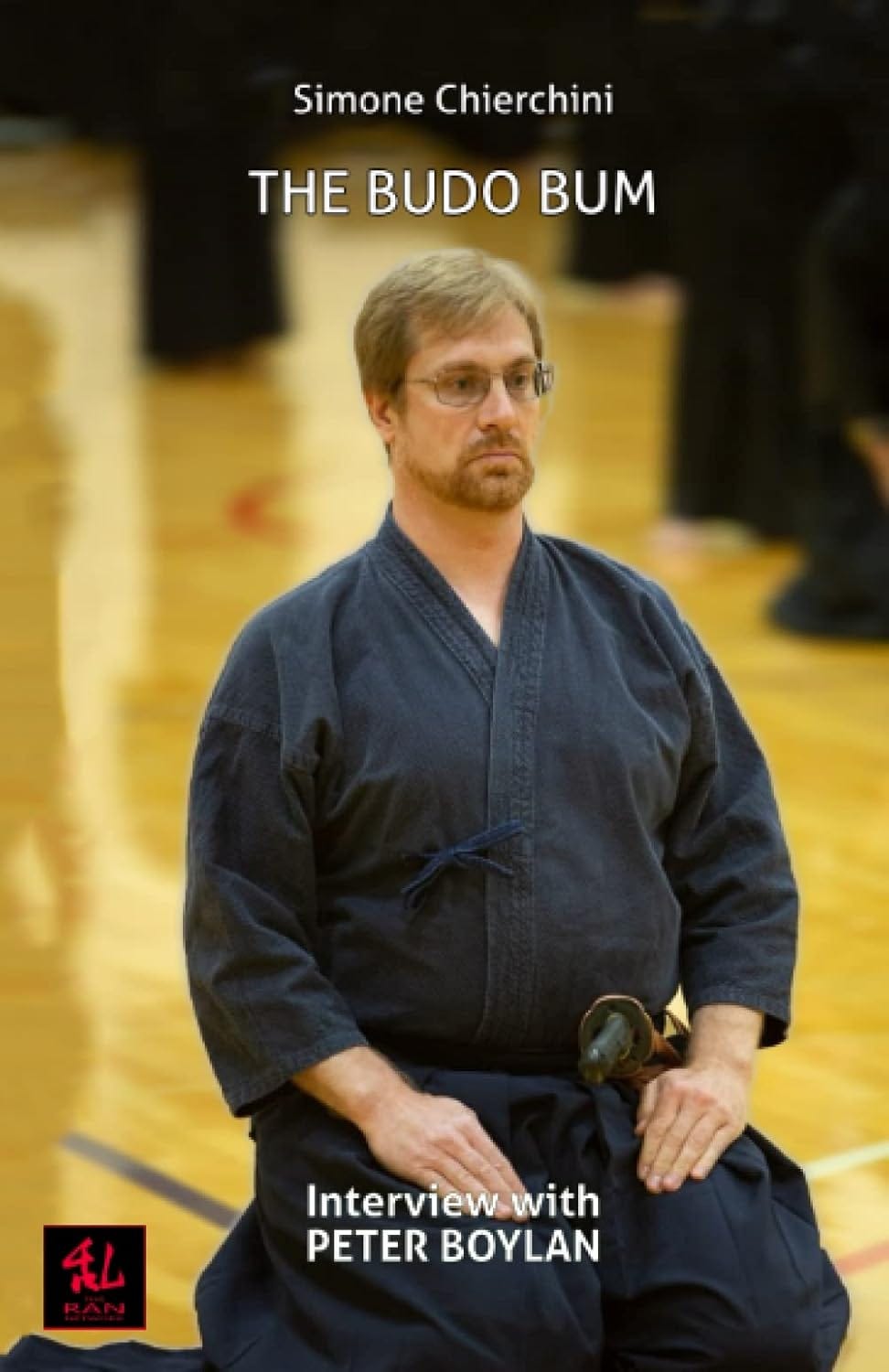Budo Is Not What You Can See
Budo isn’t all about throws, chokes, joint locks, controls, thrusts, strikes, cuts, and parries, though those are the visible elements. They are what happens when the principles of budo are applied in physical conflict situations. However, there are lots of other things that can happen in combative situations if you’re applying the principles. All effective budo teach movement, timing, spacing, rhythm and strategy. If you control the spacing and timing in a conflict situation, you may never have to use a particular technique. You may create a situation where you are able to simply walk away because your adversary decided they were in a lousy position to launch an attack.
Shinto Muso Ryu Jodo and Kodokan Judo have very different physical techniques, different strategies of dealing with conflict, and different ways of organizing the body. The notions of effective spacing are very different, as are the ideas about movement, rhythm, and timing. In either one, when practiced effectively, you learn to control an adversary from the moment of connection rather than waiting for contact. Before you touch, the instant you become aware of each other, connection is established. Sumo is famous for this. All the posturing and staring at each other before the tachiai is about reading the opponent and trying to destabilize them mentally and emotionally before the start of the action.
I look at Shinto Muso Ryu and there are only 12 basic techniques from which more than 60 kata are built. This makes me wonder, why do we need 60 kata to practice 12 techniques? How many ways do you need to practice applying kihon to be good at them? Before you’re even halfway through learning the kata, your techniques are going to be solid and effective without you having to think about them, so what are the rest of the kata for?
The kata are for teaching you the important bits. The techniques are great, but they aren’t the most important part of what you’re learning. There are important lessons about the essential principles of spacing and timing (ma’ai 間合, which can refer to either one). Spacing and timing is many times more difficult to master than any of the techniques, and far more important. If you don’t understand spacing and timing, the odds of your technique working are small. Understanding spacing is a basic requirement for knowing which techniques can be applied. And timing, as the old saying goes, is everything.
As you move through the kata, you’re introduced to a variety of distances that you learn to be comfortable with. The distances being explored vary from well outside the issoku itto no ma, or “one step one cut” spacing, to being so close to your partner that you are nearly standing on their toes. That seems like the opposite of where you want to be if you’re wielding a big stick, but if you’re not comfortable at close ranges as well as long, you’ve still got a lot of learning ahead of you. Conflict happens at all ranges, and sometimes the safest place to be is right next to your opponent. Spacing in conflict is fluid, so there are numerous kata devoted to moving in and out of the various ranges.
In Shinto Muso Ryu you often start at 遠間 toma (long distance). The early kata primarily work from toma to itto issoku no ma, and don’t get any closer. Later on the kata may start at toma, then move through issoku itto no ma and into chikama 近間 (close range) and back out again. Some of the kata start in chikama and you have to figure out how to maneuver when there is no space.
Then there’s the whole problem of timing and initiative. Do you move before your partner? After them? At the same moment? Depending on the spacing and the situation, any of these could be correct, and the kata explore all of these possibilities in great depth. The techniques don’t get any more difficult as you move deeper into the kata curriculum, the combinations of spacing and timing become more complicated, and the margins for error get smaller. You learn to wait longer and deeper into your partner’s attack before you move, until you become comfortable waiting so long under the sword that it grazes your clothes.
I think that’s why jutte (small truncheon) is usually the last weapon taught in Shinto Muso Ryu. Because it is so short, it has the smallest margin of error. You’re training against a sword that is about a meter long (39 inches) using a jutte that’s around 45 cm (18 inches). Your margin of error is basically zero. If you don’t have a solid understanding of spacing and timing before you start, you’re going to end up with some impressive bruises while you’re getting that understanding.
Timing and spacing are difficult things to master, but they aren’t the deepest or most difficult ones. The deeper you go into the kata, the less you are learning about visible acts like hitting, cutting, choking, or throwing, and the more you are learning about manipulating spacing and timing, or controlling your own and your adversary’s mental states to the point that you might not even need the visible stuff.
Once you’ve got the fundamental techniques and the foundational kata down, you’re not working on anything that can be seen. After that, it’s all about the stuff you can’t see.
Thanks to Deborah Klens-Bigman for her incredible editorial support!




I find an understanding of these elements escapes most of us for too long a time. Young and vigorous martial artists get caught up in acquiring innumerable techniques (as if breadth trumps depth) and in developing physical attributes (because the most muscular fighter always triumphs).
This exploration is, of course important and necessary, but rarely does anyone explain with such clarity the oh so crucial elements that develop martial acumen as you have in this article. My compliments on a concise and insightful article.